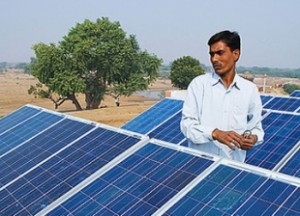Reliance Industries
Mukesh Ambani has been one of the biggest businessmen working for his consumers. Chairman of India’s largest private sector company, did it once again with Reliance Retail this time. The Company added a stunning 13 million loyal customers to its network of retail stores. The reliance stores see a footfall of over 2.5 million every week. Shocking isn’t it? Well the number is made realistic by the Reliance Retail Ltd.
Read more about Reliance Retail – Subsidiaries, Businesses & Financials.
Reliance Retail Ltd. saw new heights when its revenue reached INR 11,000 Crore registering a cash profit of Rs 78 crore. RRL, which is the subsidiary of parent organization Reliance Industries Ltd., is said to have a little fewer than 50 retail-business subsidiaries under it.
Significance of Retail Business to the entire Reliance Group
Retail business worth around $2 billion now plays a important role for the entire group worth around $68.4 billion. Over 60% of Reliance’s revenue comes from exports. Thus to invest in the high-growth domestic consumption-based market was reliance’s next bet which included both 4G broadband and retail sector.
Retail is already bearing fruits for the group while broadband launch is under testing mode.
If we take a quick sneak peek into RIL’s balance sheet, we find that the cash rich company having cash pile of over INR 80,000 crore generates almost 38% of its net profit from interest earned. The refining and petrochemical business of RIL adds to the cash pile every year, despite the business’s inability to grow.
Expectation from Retail Segment
Reliance’s retail business can benefit the company from India’s growth. Also it can bring in more profits from business operations, thereby reducing the share of interest income in the net profit. Improvement in operating profit will help the company use its cash bank for acquisition which will again help the company expand its network across India and worldwide.
Telecom business will be disruptive or the industry and to match the industry for retail, Reliance needs to catch up on industry leader Pantaloon Retail.
Growth Strategies
The value format for the retail sector accounts for over 60% of total revenue generated saw least additions of only 10 stores. Company currently aims to focus on large stores of the format wholesale or cash-and-carry. Company also is not looking at opening any reliance fresh stores of the neighborhood format.
Company is currently focusing towards the growth of loyal programme. Loyalty programme is a key driver to LFL (Like-for-Like) growth which helped contributing over 65% to the company’s sales. It is expected that the loyal-programme shoppers tend to sped twice as much as other customers do.
Reliance Brands
As a part of third strategy the company plans to expand its presence by massive expansion of its smaller stores in other formats. The fashion and lifestyle format, Reliance Trends, saw the maximum number of new store launch at 95. Also the new stores addition when added with old stores sales gives the final figures in retail sector which has been impressive for Reliance trends. Reliance trends grew by 8% LFL, where as its digital format saw 17% LFL growth. Reliance Brands showed highest overall growth numbers at 82% with revenue touching 200 crore and LFL growth of 12%. Reliance brands forms joint venture with foreign brands is a luxury business. The Company also plans to go for private labels in order to minimize its dependency on the supply chain. Also private labels give higher margins and thus forms to be a logical step for RRL.
At last to conclude we can say that Reliance Industries has been loyal to its consumers and this time, the company is expected to reach new heights provided investment is made using its cash bank to expand the network.



